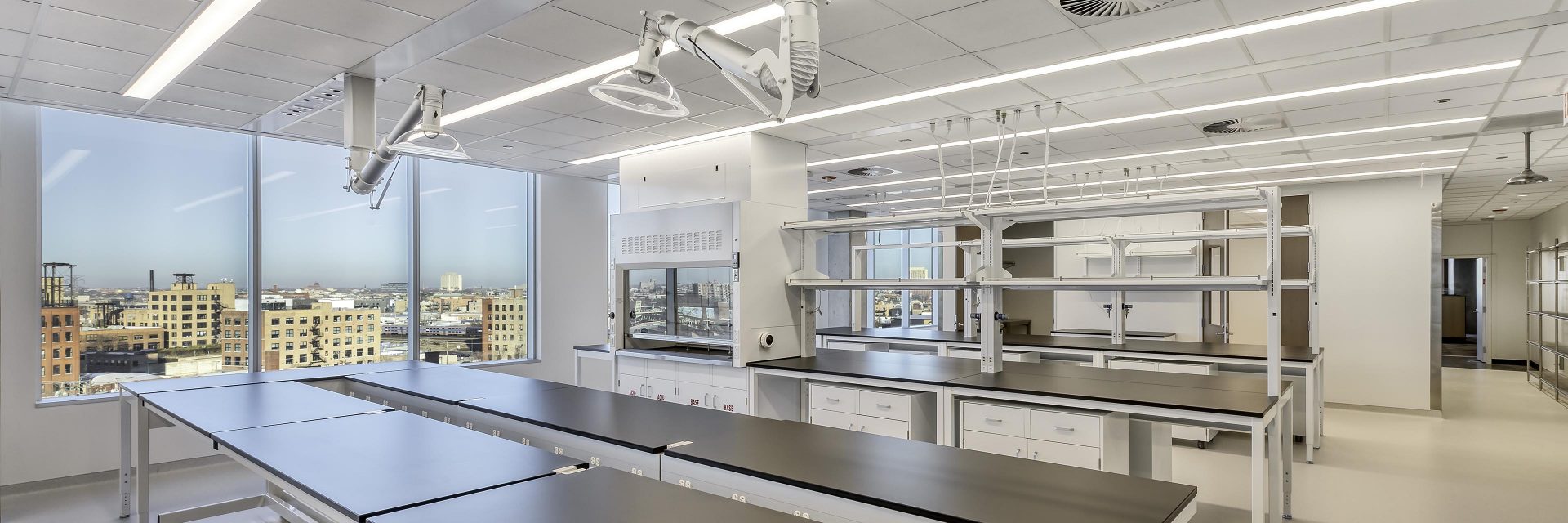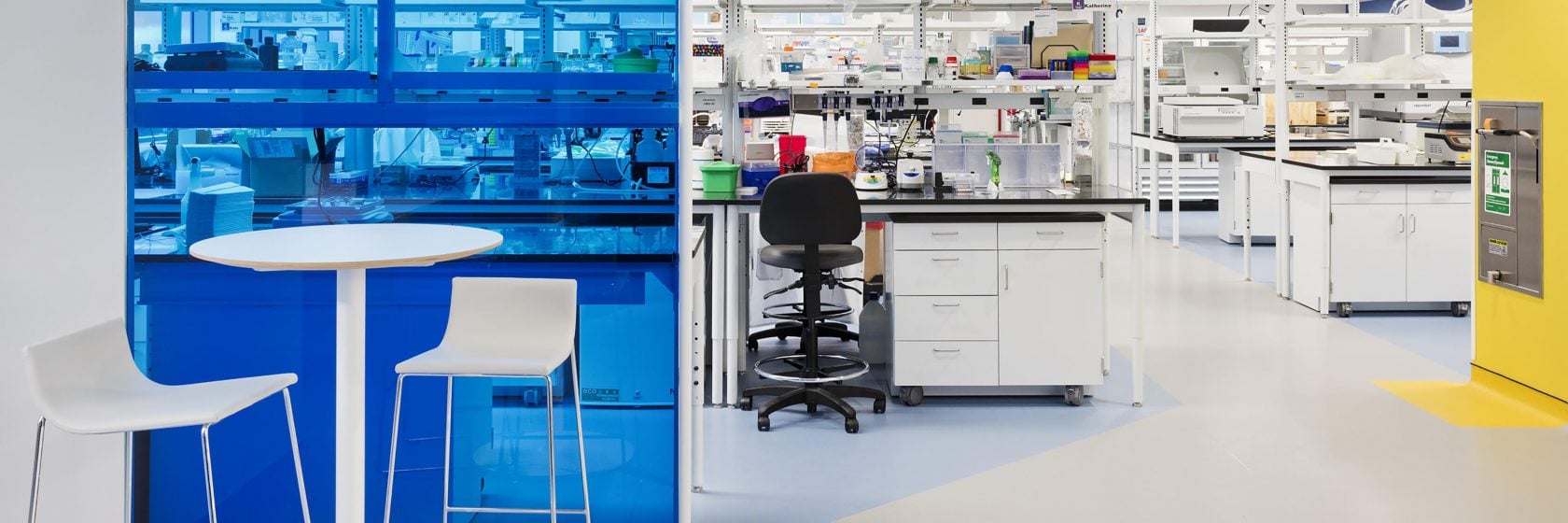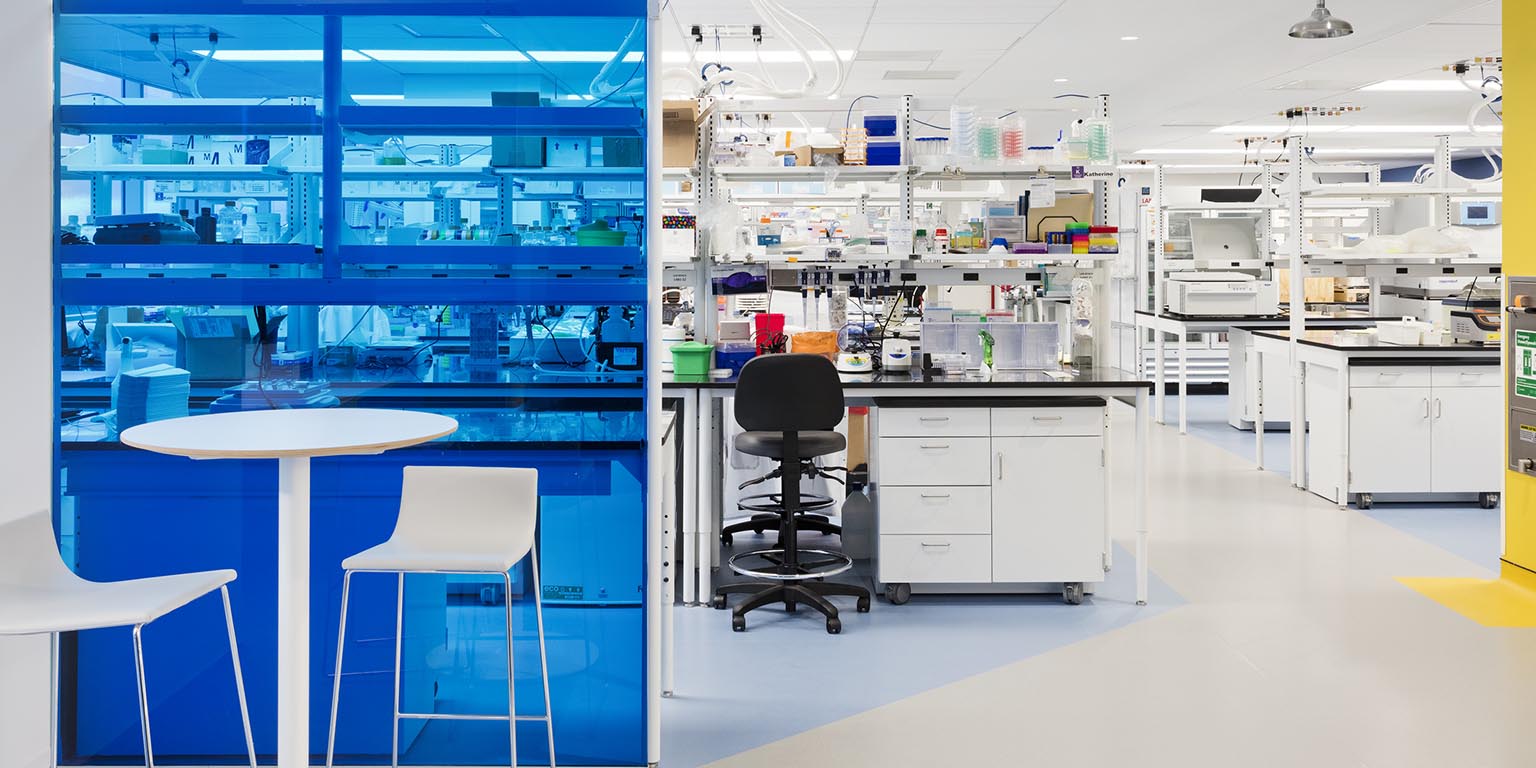
Laboratory ergonomic design supports scientific discovery while keeping the lab team healthy and productive.
A good lab design allows the science to shine. It takes into account the equipment, utilities, materials, and space needed to support the next breakthrough. An outstanding lab design also considers human factors; how people interact with things and the space as they do their day-to-day work. These details—the laboratory ergonomics—ensure safety, comfort, and productivity of the lab team.
What are laboratory ergonomics?
Ergonomics provide a gamut of applications to provide a safe and efficient workplace, which is incredibly important in laboratories; lab work requires long hours, great concentration, repetitive tasks, and potentially hazardous materials. Good laboratory ergonomic design not only improves safety and efficiency, but job satisfaction, productivity, and employee retention.
Smart laboratory ergonomic design studies the way people complete work in a lab by examining and improving the interactions between workers and their tasks, equipment, materials, workspace, Personal Protective Equipment (PPE), and each other to provide safety and efficiency in the workplace. It is important to point out that the study of lab ergonomics goes beyond the equipment furnishing the space and extends into the structure of the facility as well. There are many ergonomic factors to consider when building or designing a new lab.
In this article, we review facility design considerations for lab ergonomics. This includes:
- The collaborators needed to design for quality lab ergonomics
- The lab environment and how it affects ergonomics
- Designing space to improve ergonomics


Who contributes to a good ergonomic laboratory design
Successful ergonomic design is the result of the collaboration between several key individuals: architects, engineers, equipment manufacturers, scientists, lab technicians, and owners or lab managers. Each needs to be consulted and involved in the design process as they bring unique and valuable working perspective to the space.
Laboratory design professionals: architects, engineers, interior designers
These specialists equip themselves with the latest information, inform clients of potential issues, and work with the lab team to tailor solutions to meet specific needs. The result? Facilities that incorporate ergonomic practices, and innovative solutions to usability challenges.
Laboratory equipment manufacturers
Technical functionality is essential for an equipment manufacturer to succeed, but those that design products to ensure safety, productivity, and comfort stand out from the crowd. To do this well, a manufacturer will gather feedback from customers and equipment users and continually improve product design and usability.
Scientists and laboratory technicians
Scientists and lab technicians have first-hand experience of how a design affects their day-to-day work. Their insight is invaluable. At CRB, our design teams gather scientists’ and lab technicians’ feedback before, during, and after a build to ensure the lab is functioning as intended and to modify the features when necessary to meet their needs.
Owners and laboratory managers
These decision makers are responsible for the health and safety of the lab team. They can work closely with the scientists and lab technicians—ask questions, gather feedback, and seek informed partners on design, construction, and equipment supply. Their efforts will pay off in improved productivity, fewer absences, reduced employee churn, and ease of attracting talented employees.
How to make the laboratory environment more comfortable and safe
It’s safe to say that every aspect of lab design affects the people who work in the lab. And, while ergonomics is often reduced to the height of a lab bench or the ease of reaching equipment, the first aspect to address is the space itself. Consider how to adapt the space to the work that will take place, and to accommodate for local conditions and even habitat.
Air quality
Safety is first and foremost when designing the HVAC in a lab, particularly if the lab will use hazardous materials, but air quality has other impacts as well.
- HEPA filtration in Biosafety Cabinets (BSC) maintains a safe level of particulates and mitigates allergens.
- High air exchange rates in labs provide clean air which contributes to employee comfort and safety. In fact, labs were among the safest workplaces to return to after COVID due to the frequent rate at which air and airborne pathogens are cycled out of the environment.
- Humidity control is critical for proper equipment functionality but also contributes to a comfortable environment for lab employees.
- Even when the materials in a lab are not hazardous, they may carry heavy smells. Prolonged exposure to these scents can trigger headaches or simply be undesirable for lab employees. Well-designed lab exhaust contributes to overall health and olfactory comfort for the lab team by removing fumes and smells from the workstation.
Light
Exposure to natural light is essential to human wellbeing as it supports healthy physical and mental health. In the past, labs were often tucked away in the core of a building, with little or no natural light. Thankfully, lab design has evolved significantly in recent years, and access to daylight and views is now more commonplace.
- Glass transparency offers views and allows for natural light to enter the space.
- Window shades allow users to control lighting levels.
- Electrochromic auto dim glass controls light and temperature, and reduces the environmental impact of the building.
- The color temperature of artificial lighting and dimming controls can follow Circadian Rhythms. This is particularly important for labs that function outside traditional working hours.
- Ceiling height affects sound, light, and potentially views. When possible, design for mechanical systems to allow for higher ceilings.
Sound reduction
A quiet environment supports concentration, eases communication amongst team members, and decreases the potential for long-term effects on hearing.
- Vacuum cabinets can be selected with ducts sized to lower sound levels.
- Different flooring types provide a range of sound absorption levels.
- Appropriate ceiling height and materials for a particular space can improve acoustics and sound absorption.
A less obvious aspect of ergonomics is the need for spaces for people to collaborate without disturbing others. Consider creating meeting rooms or alcoves that take distracting discussions away from the bench. These spaces also function well as quiet rooms for non-lab tasks that require concentration.
What happens inside the laboratory
Once the space itself is designed, the equipment, furniture, storage spaces, and movement through the lab come into play. Here is an overview of aspects to consider:
- Location of equipment and workstations should consider employee movement for safe and efficient workflow through the lab.
- Seating style and size should be appropriate to the bench or desk height, and adjustable settings are key to allow for the different heights of the lab team.
- Countertop height, adjustability, and design should allow staff to easily reach the workspace while working.
- Casework planning should consider the accessibility of materials, the ease of access, reach heights, and the size and weight of stored materials.
- Flooring options should offer comfort to employees that stand for long periods of time.
A holistic approach to lab design that considers ergonomic impact will support the lab team and improve their safety, comfort, and productivity. Architects, interior designers, lab managers, and partners can work together to build labs that meet the needs of science and scientists.
Want to learn more about our holistic lab design approach? Contact our team of lab design experts.


